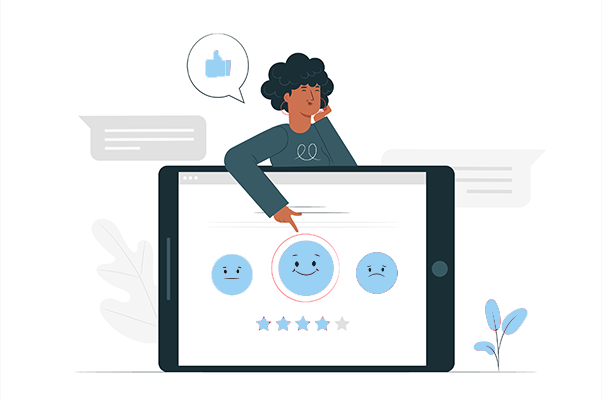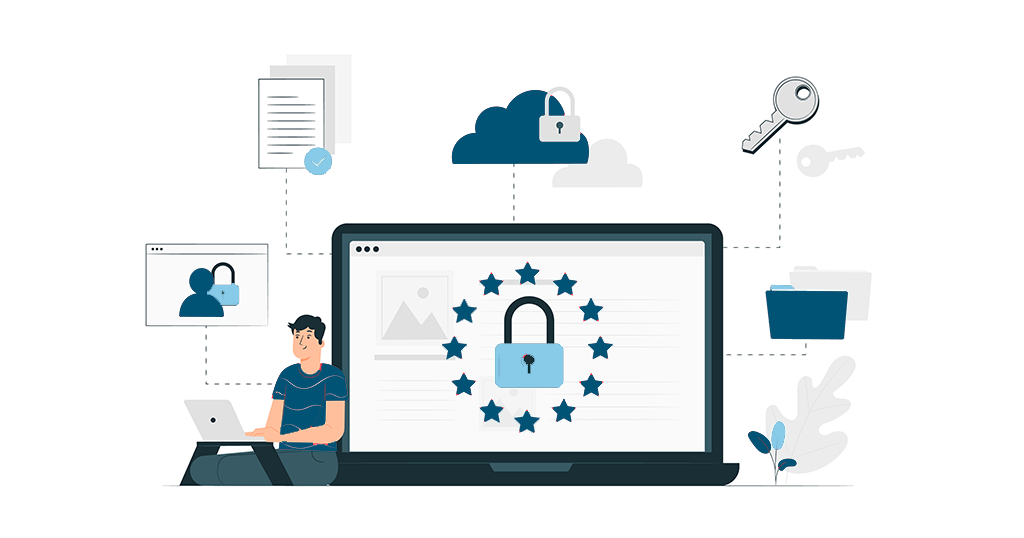Things to Remember While Collecting Sensitive Employee Data
#BlackLivesMatter and #Metoo movements have shown society a mirror. We may think that we have come a long way and are no more part of the society that works in an orthodox manner. But these incidents time and again remind us of our reality. We are not progressing at the speed we thought; infact, we are still far behind.
It is the reason why more and more companies are taking their DEI initiatives now seriously. They are going beyond meeting diversity goals and shifting their focus to real issues that hamper the fabric of society and their companies, even if that means going the extra mile.
1. Legal Obligations to Collecting Employee Data
As the famous adage goes – if you can’t measure it, you can’t manage it. To protect employees, companies must have all the correct data in place to measure, analyze, and work upon.
But to collect such vast and sensitive data – demographic, gender, race, ethnicity – is not easy.
You don’t want to intrude into employees’ privacy and make them uncomfortable. However, you do need the data. It helps you get hold of your workforce composition, prevent biases that may penetrate, protect the vulnerable section of society that may be subjected to discrimination, and more.
Also, there are legal obligations that a company has to abide by. Such as private employers with more than 100 employees are required to report gender, race, and ethnicity data to the U.S. Equal Employment Opportunity Commission (EEOC).
In the U.S., failure to comply with standards set by the Fair and Accurate Credit Transactions Act (FACT Act) and the Fair Credit Reporting Act (FCRA) can result in significant penalties. And for employees based in the E.U., H.R. managers must also ensure all data handling processes comply with the GDPR.
Even when your company has fewer than 100 employees, it is recommended to collect DEI information. Title VII of the Civil Rights Act of 1964 prohibits employment discrimination based on race, color, religion, sex, national origin, and other protected characteristics.
![]()
2. Things to Remember While Collecting Sensitive Employee Data
Companies can collect employee data in two simple ways. Either they can outsource the work to a third party or can handle it internally. Given the cost of outsourcing and privacy risks, small companies may prefer to do it internally.
However, large companies may choose to pick third-party vendors. Since third-party vendors have experience handling a vast amount of data, they can better maintain, manage, segregate, and analyze tons of data without compromising security. They perform data cleansing, anonymization, and aggregation to minimize the risk of privacy violations by employees.
Whichever method you choose, there are a few things that you should keep in check.
- Restrict the access of such data to a few authorized personnel. Create a strict guideline for who can access and work on the data. You can use the data masking technique to hide the actual data with modified content like characters or numbers.
- Use administration tools that offer encryption and strong password protection on the database.
- Collect a minimum amount of data that is necessary to make decisions.
- Allow employees to amend or delete the data if they change their minds.
- Communicate clearly about the purpose of data collection and its ultimate use.
3. Collecting Employee Data
Convincing employees to provide their personal data can be tricky. You should first ensure that you are only curating the necessary details. Providing too much information can be uncomfortable for employees and may lead to unnecessary suspicion. But then, what is the proper process to collect the data? How should companies approach it?
-
Find a sponsor
To start such a sensitive process, first, you must earn the confidence of your employees. And you cannot achieve that without the interference of a person from a senior-level position. Pick someone from the management who is trustworthy and who everyone listens to. Make them your advocate.
Now, ask the sponsor to put forth a concrete plan that clarifies in and out of the data collection activity and pulls out any skepticism from the picture. The more details you provide, the better trust you can gain. Therefore you must elaborate on,
- Purpose of data collection,
- Where it would be used and
- How will collected data be protected
- How exactly the data will change the company policies or performance
- Assure them of data anonymity
-
Conduct Surveys

Conduct surveys after conducting an informative session on a topic.
For instance, if you organized a session on LGBTQ+ awareness, you must conduct a survey to pick employees’ thoughts after the session. Surveys give you a general trend about any topic.
Also, decide the level of data you want to collect and, accordingly, draft your surveys. Surveys that use a set of pre-determined answers are easier to analyze, interpret, and look at than open-ended data. However, open-ended data usually gives more detailed answers.
-
Use HRIS Tools
Rather than collecting data, again and again, utilize your Human Resource Information System (HRIS). It stores the information in a centralized format and gives both – employees and employers – easy access to the data.
HRIS tools store a diverse range of data that actually benefits the H.R.s at the time of decision or policymaking. Processes and data it tracks encompass applicant tracking, onboarding, payroll, performance management, and accounting functions. This means HRIS tools collect a diverse range of data that can be further utilized during data analysis.
Best part about HRIS tools is it provides a personal account to every employee, where employees can store or update all their official records or access office documents. It adds a layer of security to the whole process.
These tools are going a step ahead and ensuring employee privacy with the two-factor authentication. Here, in addition to passwords, employees also have to type in OTPs to access their accounts, making the complete process more secure.
Some of the most popular HRIS vendors include:
- Ascentis
- ADP
- BambooHR
- Criterion
- CoreHR
- Dayforce
- Epicor
- Infor CloudSuite HCM
- Kronos Workforce
- Oracle HCM Cloud
- SAP SuccessFactors
- Ultimate Software UltiPro
- Workday
Related Articles: Your One-Step Guide to Building an HR Tech Stack
Summing It Up
You cannot take the data collection process for granted. Be it ensuring compliance or regulatory issues, the level of complexity while dealing with sensitive employee data is high. Therefore you must provide restricted data access and a high level of encryption.
Also, be smart about data collection techniques. Demarcate the line between personal and public data and then use surveys, HRIS tools, and sponsors to collect data in a trustworthy manner.
Subscribe For Updates
Categories
- Accountant
- AI
- Automation
- Awards and Recognitions
- Blue Collar Staffing
- Burnouts
- Campus Recruiting
- Cloud
- Co-Ops agreements
- Company Culture
- Compliance
- contingent workforce
- Contingent Workforce
- COVID-19
- Cyber Security Staffing
- Data Strategy
- Digital Transformation
- direct sourcing
- Distributed Workforce
- Diversity
- Diversity & Inclusion
- Economy
- Events & Conferences
- fleet industry
- Gig Economy
- Girls in Tech
- Global Talent Research and Staffing
- Government
- Healthcare
- Healthcare Staffing
- Hiring Process
- Hiring Trends
- Home Helathcare
- HR
- HR Practices
- HR Tech
- IT
- Labor Shortages
- Life Science
- Local Governments
- News
- Nursing
- Payroll Staffing
- Public Sectors
- Recruiting
- Remote Work
- Skill Gap
- SMB Hiring
- Snowflake
- Staffing
- Staffing Augmentation
- Staffing Challenges
- Talent ROI
- Tech Staffing
- Technology
- Tips & tricks
- Total Talent Management
- UI/UX Design
- Uncategorized
- Veteran Staffing
- Veterans Hiring
- Veterans Hiring
- Workforce Management
Recent Posts
- Automation in Recruiting: From Chatbots to Predictive Screening
- Gig Economy Expansion: The Impact on Talent Pools and Business Models
- Skills-Based Hiring: Why Credentials Alone Don’t Cut It in 2025
- Procurement 3.0: AI & Intelligent Automation in 2025
- Q3 Is Here: Is Your Contingent Workforce Strategy Falling Behind?
Newsletter
Archive
- September 2025
- August 2025
- June 2025
- April 2025
- March 2025
- December 2024
- November 2024
- October 2024
- September 2024
- August 2024
- July 2024
- June 2024
- May 2024
- April 2024
- March 2024
- February 2024
- January 2024
- December 2023
- November 2023
- October 2023
- September 2023
- August 2023
- July 2023
- June 2023
- May 2023
- April 2023
- March 2023
- February 2023
- December 2022
- November 2022
- October 2022
- September 2022
- August 2022
- July 2022
- June 2022
- November 2021
- October 2021
- September 2021
- August 2021
- July 2021
- June 2021
- May 2021
- April 2021
- March 2021
- February 2021
- January 2021
- December 2020
- November 2020
- October 2020
- September 2020
- August 2020
- July 2020
- June 2020
- May 2020
- April 2020
- March 2020
- February 2020
- January 2020
- December 2019
- November 2019
- October 2019
- September 2019
- August 2019
- July 2019
- June 2019
- May 2019
- January 2019
- December 2018
- November 2018
- October 2018
- September 2018
- August 2018
- July 2018
- June 2018
- May 2018
- April 2018
- March 2018
- February 2018
- January 2018
- December 2017
- November 2017
- October 2017
- September 2017
- August 2017
- July 2017
- June 2017
- May 2017
- November 2016
- October 2016




